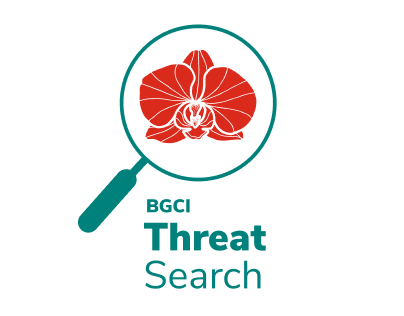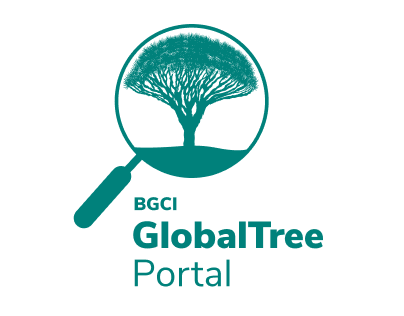Convention on International Trade in Endangered Species
- The Global Strategy for Plant Conservation
- Access and Benefit-Sharing
- Convention on Biological Diversity
- Illegal Plant Trade Coalition
- Convention on International Trade in Endangered Species
- The Sustainable Development Goals
- International Agenda for Botanic Gardens
The Convention on International Trade in Endangered Species of Wild Fauna and Flora (CITES) entered into force in 1975 and over 180 countries, or Parties, have signed up, committing to protect over 35,000 animal and plant species from unsustainable or illegal international trade. Arguably the strongest of the biodiversity conventions, its provisions are translated into national legislation by Parties; it provides a legal framework for the regulation of trade in those species that are exploited commercially for international trade.
Ensuring that the acquisition, use and transfer of botanical collections are compliant with international conventions and legislation, such as the Convention on International Trade in Endangered Species, is a major consideration for botanic gardens in the 21st century.
CITES Appendices
The species covered by CITES are listed in three Appendices, I, II and III, which offer varying degrees of protection, and trade is regulated by means of a permitting system.
Appendix I:
Species threatened with extinction, for which international trade is only authorized in exceptional circumstances, are listed here. There are around 300 plant species listed in Appendix I and import, export and re-export permits are required.
Appendix II:
Species that are not threatened with extinction at present, but may become so if uncontrolled trade continues, are listed here. Trade is permitted of both wild and artificially propagated material provided an appropriate permit is obtained. There are around 29,000 plant species on Appendix II; export and re-export permits are obligatory but import permits are not necessary unless required by national law, for instance when trading with the EU.
Appendix III:
Species that are threatened locally with extinction through commercial exploitation and therefore subject to trade controls within certain countries are listed here. There are currently around 18 plant species listed in this Appendix. International trade in this material requires an export permit from the country that listed the species, or a certificate of origin if exported from another country.
Additional Information
Species can be added, amended or deleted, from Appendix I and II by the Parties every three years at the Conference of the Parties (CoP), and from Appendix III at any time
In order to implement the Convention, a Party has to establish at least one Management Authority to ensure that the specimen has been legally acquired and to issue the permit and at least one Scientific Authority, to ensure that trade in that species is not detrimental to its survival in the wild.
As stated, Parties are required to have their own national legislation and this may be stricter than the provisions of the Convention itself, for instance some Parties prohibit all exports of their native wild plants. The stricter measures outlined in the EU Wildlife Trade Regulations (EU WTR), which transpose CITES into EU law, require both import and export permits for species listed on Appendix I and II, and EU Member States can agree not to accept imports of any species or specimens from any countries where they have doubts about legality. Other examples of stricter measures include Australia and the United States of America.
It is essential for anyone planning to import or export a CITES listed species to check requirements with the CITES Management Authority of both import and export countries.
CITES and Botanic Gardens
Ensuring that the acquisition, use and transfer of botanical collections are compliant with international conventions and legislation, such as CITES, is a major consideration for botanic gardens in the 21st century. Furthermore, the illegal trade in plants and animals is a high profile political issue and botanic gardens have a central role to play in addressing these matters and improving the implementation and awareness of CITES for plants. They can actively protect taxa threatened with extinction through illegal or unsustainable commercial exploitation in several differing but complementary ways.
In relation to CITES, botanic gardens can:
- Register as a scientific institution with their CITES Management Authority facilitating exchange of material for non-commercial purposes, furthering research into species that may be endangered by international trade.
- Provide advice and training to their country’s CITES Management and Scientific Authorities, customs and legal authorities. For instance, training could be given on cacti, cycads, orchid hybrids and timber.
- Act as rescue centres for holding plant material confiscated by the statutory authorities. The Royal Botanic Gardens, Kew, and the US Botanic Garden are two examples of rescue centres.
- Provide an example to the public by setting ethical standards for their own conduct in collecting, displaying and using plants.
- Develop and implement public awareness programmes on CITES.
It is essential that staff working in all areas of a botanic garden, from gift shop procurement and research and collections, to visitor services and exhibitions and events are compliant and up to date with all CITES requirements.
BGCI has developed a checklist for botanic gardens to help define an individual botanic garden’s policy and procedures with respect to this convention.
-
CITES Manual for Botanic Gardens
Policy and Advocacy / Publication / English, Spanish, Italian
CITES Learning Modules
BGCI has created a suite of learning modules on the Convention of International Trade in Endangered Species (CITES), essential for those working in botanic gardens with CITES listed species. The modules explain what CITES is, explain a CITES listing, and provide information on how CITES can be implemented in your institution. After every module there is a quick quiz to test your knowledge.
-
CITES Learning Module Quizzes
Plant Conservation, Policy and Advocacy / Quiz / English -
CITES Learning Modules
Policy and Advocacy / E-learning module / English
Share





